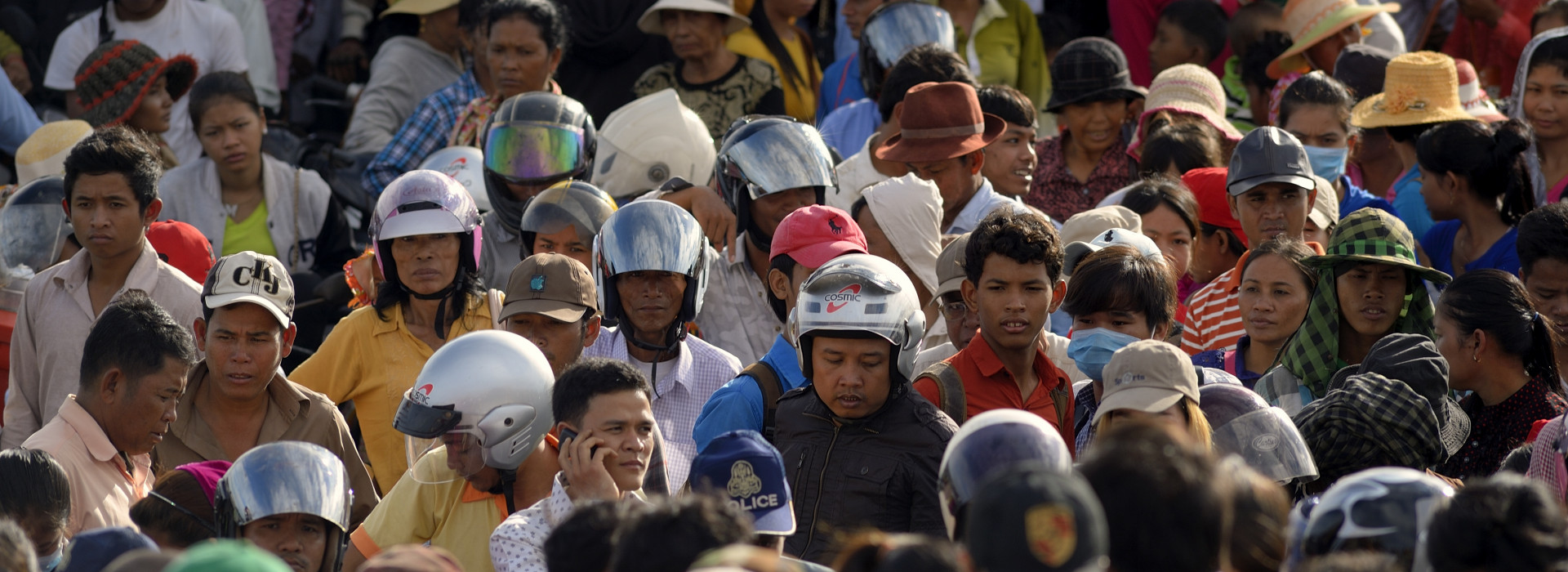
Socio-Economic Monitoring and Social Impact Assessment
The countries of the Lower Mekong River Basin (LMB) – Cambodia, Lao PDR, Thailand, and Viet Nam – differ significantly from each other in geographical size, population, economies, standard of living, as well as political and social practices. Despite high economic growth rates, a large proportion of the LMB’s 65 million people remain among the poorest in the world. In order to spur growth and improve incomes, the governments of the LMB countries have prioritised development, including the exploitation of natural resources.
With a total population expected to increase to 100 million by 2025, the need for economic growth and poverty reduction will significantly increase demand for natural resources. Development activities, including the expansion of irrigation, hydropower and flood protection, will alter the patterns of the hydrological cycle. Combined with the predicted impacts of climate change, this may alter the frequency of floods and droughts, and cause changes in the productivity of aquatic ecosystems. Potentially, the wellbeing of millions of people could be affected.
Due to the large size of the LMB, impacts from changes in the river will be concentrated in certain areas, while other areas will remain largely unaffected. Similarly, social impacts will also be localised in specific areas; impacts – either positive of negative – will be felt differently across the LMB depending on the location and socio-economic characteristics of particular communities.
It is therefore essential to identify which areas are most vulnerable and the extent to which water resources development projects sustain local livelihoods in the long term. This information is vital for basin planning and to identify the opportunities and risks of different development scenarios.
MRC Interventions
The MRC is undertaking a programme of recurrent surveys to study the social conditions and vulnerability of households to changes in the environment and in the availability of aquatic resources through the Social Impact Monitoring and Vulnerability Assessment (SIMVA).
SIMVA is an important tool for socio-economic monitoring, generating valuable data for more in-depth studies and basin development planning work. It is part of the MRC’s environment, socio-economic and climate change monitoring system in the LMB. SIMVA supports the goals of the MRC’s Basin Development Strategy, Strategic Plan, and the 1995 Mekong Agreement, which all reaffirm the MRC’s commitment to promote social development.
Whilst the MRC does not undertake specific social improvement programmes, the objective is to ensure that projects undertaken under the MRC’s mandate should have a positive impact on socio-economic conditions within the basin.
The first SIMVA in 2011 generated baseline data on socio-economic conditions and the extent of dependence on water resources of people living in the 15 km-wide corridors along each side of the Mekong mainstream and those living on the major floodplains. The 2014 survey focused on the impacts of floods and droughts on households in the LMB corridor. The latest survey in 2018/2019, results of which will be available in early 2021, features gender related information for the first time, in addition to overall livelihood dependency on the water resources. The data is critical for the effective design of prevention and adaptation measures, and for timely water resource interventions.
Besides SIMVA, other major socio-economic monitoring exercises conducted by the MRC in collaboration with the Member Countries include the State of the Basin Report (SOBR) 2018, which was the first large-scale effort to gather comprehensive socio-economic information in the basin, including the Upper Mekong River Basin. This follows the SOBR 2010 and 2003. The SOBR follows the MRC’s social impact monitoring system consisting of three strategic indicators: (i) living conditions and wellbeing; (ii) livelihoods and employment in MRC water-related sectors and (iii) overall social condition, and the economic impact monitoring comprising two strategic indicators: i) economic value of water resources sector; and ii) contribution to basin economy. Another key exercise featuring a large-scale socio-economic impact assessment is the Council Study on the Sustainable Management and Development of the Mekong River Basin including Impacts of Mainstream Hydropower Projects, published in 2018. The studies foster better understanding of socio-economic changes in the region and how water related developments affect social conditions.
SIMVA will continue to be a critical part of the MRC’s core river network monitoring under the MRC Strategic Plan 2021-2025. The socio-economic database, that was established since 2015, will be restructured in a web-based platform to provide better public access to data and analysis. The upgrade is in line with the newly adopted Mekong River Basin Indicator Framework and the PDIES.
An analysis of gender and vulnerability needs, challenges and opportunities throughout the basin will be undertaken to serve as a baseline of the current understanding of gender and vulnerability issues in relation to water, food and energy security and to identify the major knowledge gaps that need to be filled.
The key knowledge gaps identified will be the basis for developing recommendations on cost effective and priority gender disaggregated data and vulnerability mapping requirements. Following this study, a plan to improve gender and vulnerability data collection will be established and guide the data collection efforts by the Member Countries.
Using these data, recommendations will be provided on policy measures for improving equity for vulnerable groups in relation to water, food and energy security.